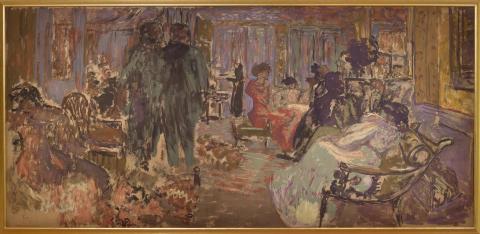Paris at the turn of the century
At the turn of the twentieth century, Paris was a vibrant cultural centre where artists, writers, publishers, patrons and art dealers were part of a large and active network. Impressionism had established an entirely new approach to painting, capturing the fleeting effects of light and images of urban life. Paris was a magnet for artists of all disciplines and from many countries. Friendships and personal relationships emerged and were a significant factor in the development of collaborations and ideas, and patrons and dealers often acted as intermediaries.
Pablo Picasso was introduced to the art of Paul Gauguin through his friend, the sculptor and collector Paco Durio, to whom he offered La Belle Hollandaise 1905 in return for Durio’s financial support of a trip to the Netherlands. The inscription on the upper left corner of the painting reads: ‘A mi querido amigo Paco Durio’ (‘To my beloved friend Paco Durio’).
Gauguin’s bronze of Madame Schuffenecker reflects his friendship with her husband, Claude-Emile Schuffenecker, who had assisted Gauguin on a personal and financial level. John-Peter Russell was a friend of the great French sculptor Auguste Rodin, who sculpted a wax portrait of Madame Russell; and Edouard Vuillard’s Les salon des Hessel c.1905 depicts a gathering in the apartment of Jos and Lucie Hessel, who played a vital role in the Paris milieu of collectors and art dealers.
This intimacy resulted in the exchange of many ideas among artists, the development of new techniques, and openness to the art of different cultures. Out of this intense artistic environment emerged a series of art movements that were crucial to the development of European art in the twentieth century.
Connected objects

La Belle Hollandaise 1905
- PICASSO, Pablo - Creator

Madame Russell 1888
- RODIN, Auguste - Creator

Belle-Ile c.1888-1909
- RUSSELL, John - Creator
Metadata, copyright and sharing information
About this story
- Subject

